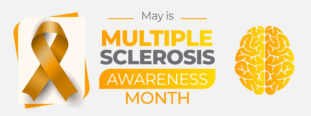Lemtrada receives FDA approval
What a difference a year makes.
Exactly one year ago, the MS community was puzzling over the Food and Drug Administration’s mixed message about Lemtrada (alemtuzumab). The FDA advisory committee voted that there was substantial evidence that Lemtrada was effective for the treatment of multiple sclerosis. However, the committee also ruled the clinical trials that provided the evidence weren’t quite good enough, so the drug wouldn’t be available in the U.S. (See Lemtrada hits speed bump on road to approval, MSology, November 20, 2013). So Genzyme, the drug’s manufacturer, resubmitted its application with new analyses and some longer term data.
That persistence has paid off. The FDA has now reversed its decision, allowing Lemtrada to be marketed in the U.S. Lemtrada had already been approved as an MS treatment in Europe, Canada, Australia and other countries.
Indeed, persistence is the hallmark of the drug. Back in the early 1980s, alemtuzumab was first one of the first monoclonal antibodies (MAb) to be developed. But it would take two Cambridges and two decades before it would fully emerge. The first Cambridge was the Cambridge Pathology Lab in the UK where the drug was developed under the name CAMPATH-1. The British National Research and Development Council acquired the rights, then licensed it to Wellcome Biotech. It was first tested as an MS treatment in 1991 (Moreau and colleagues. Lancet 1994;344:298-301).
After a series of licensing deals, alemtuzumab was acquired by Genzyme and moved to Cambridge, Massachusetts. A phase II trial called CAMMS223 (for Campath-1H in MS) demonstrated the potential benefits and the potential risks of the new treatment (CAMMS223 Trial Investigators and colleagues. N Engl J Med 2008;359:1786-801; free full text at www.nejm.org/doi/pdf/10.1056/NEJMoa0802670). Alemtuzumab reduced the relapse rate by 74% compared to Rebif, and 80% of people experienced no relapses (compared to 52% of people taking Rebif). The risk of developing disability was reduced by two-thirds with alemtuzumab compared to Rebif. In real numbers, this meant that people improved slightly on their disability score with alemtuzumab and worsened slightly while on Rebif. However, the trial had to be stopped early because three people developed bleeding complications (called immune thrombocytopenic purpura, or ITP).
The results were promising enough to prompt two phase III studies: CARE-MS I in untreated people, and CARE-MS II in people who had previously been treated with another disease-modifying therapy (DMT). Both studies compared Lemtrada with Rebif (there was no placebo group). An unusual feature was the dosing: Lemtrada is administered as a slow drip into the vein (like Tysabri) once-daily for five days in a row, followed by a three-day course one year later (so eight treatment days over a two-year period).
In CARE-MS I, the annualized relapse rate (ARR; the number of relapses for the group averaged over two years) fell to 0.18 (averaged over two years) with Lemtrada compared to 0.39 with Rebif (Cohen and colleagues. Lancet 2012;380:1819-1828). Disability rates were low overall and there was no difference between the drugs on this measure. In CARE-MS II, the ARR was 50% lower than with Rebif (0.26 vs. 0.52) (Coles and colleagues. Lancet 2012;380:1829-1839). But more importantly, progression of disability was 42% lower with Lemtrada. Indeed, people showed a slight improvement in their disability scores.
After completion of the CARE-MS studies, people could enter an ongoing extension and four-year results (i.e. two years on study + two years in the extension) were presented at this year’s Americas and European Committee for Treatment and Research in MS (ACTRIMS/ECTRIMS) meeting.
For the CARE-MS I group, 73% didn’t need additional courses of treatment (so were untreated for the two previous years) (Coles and colleagues. ECTRIMS 2014; abstract P090). Relapse rates remained low (ARR of 0.14 in year 4) and 83% had no accumulation of disability. In the CARE-MS II extension, 68% required no further treatment (Hartung and colleagues. ECTRIMS 2014; abstract P043). The ARR was 0.23 in year 4, and 76% had no disability progression.
These results suggest that Lemtrada may be the most potent DMT of the MS drugs currently available. However, the FDA has flagged a number of potential safety issues that must be addressed. People need to be monitored for infusion-related reactions for two hours after the infusion. Some people develop thyroid conditions or other autoimmune conditions during treatment, so monthly blood tests are needed for 48 months after the last dose. An antiviral medication must be taken for two months after the infusion to guard against viral flare-ups (such as cold sores or shingles). A urine test is needed every three months. And an annual skin exam is required to check for skin cancers. In the CARE-MS II trial, one skin cancer was reported in the Lemtrada group (and one case in the Rebif group). The risk is estimated to be less than 1%.
To ensure that Lemtrada is taken properly, access to the drug will be controlled through a restricted distribution program. The FDA-approval label also states that Lemtrada should generally be reserved for people who have not responded well enough to two prior MS therapies. This contrasts with the drug label in other countries. In Canada, Lemtrada can be used earlier – after only one prior therapy has been shown to be ineffective.
Share this article
Facebook Twitter pin it! Email
Related Posts
Back





